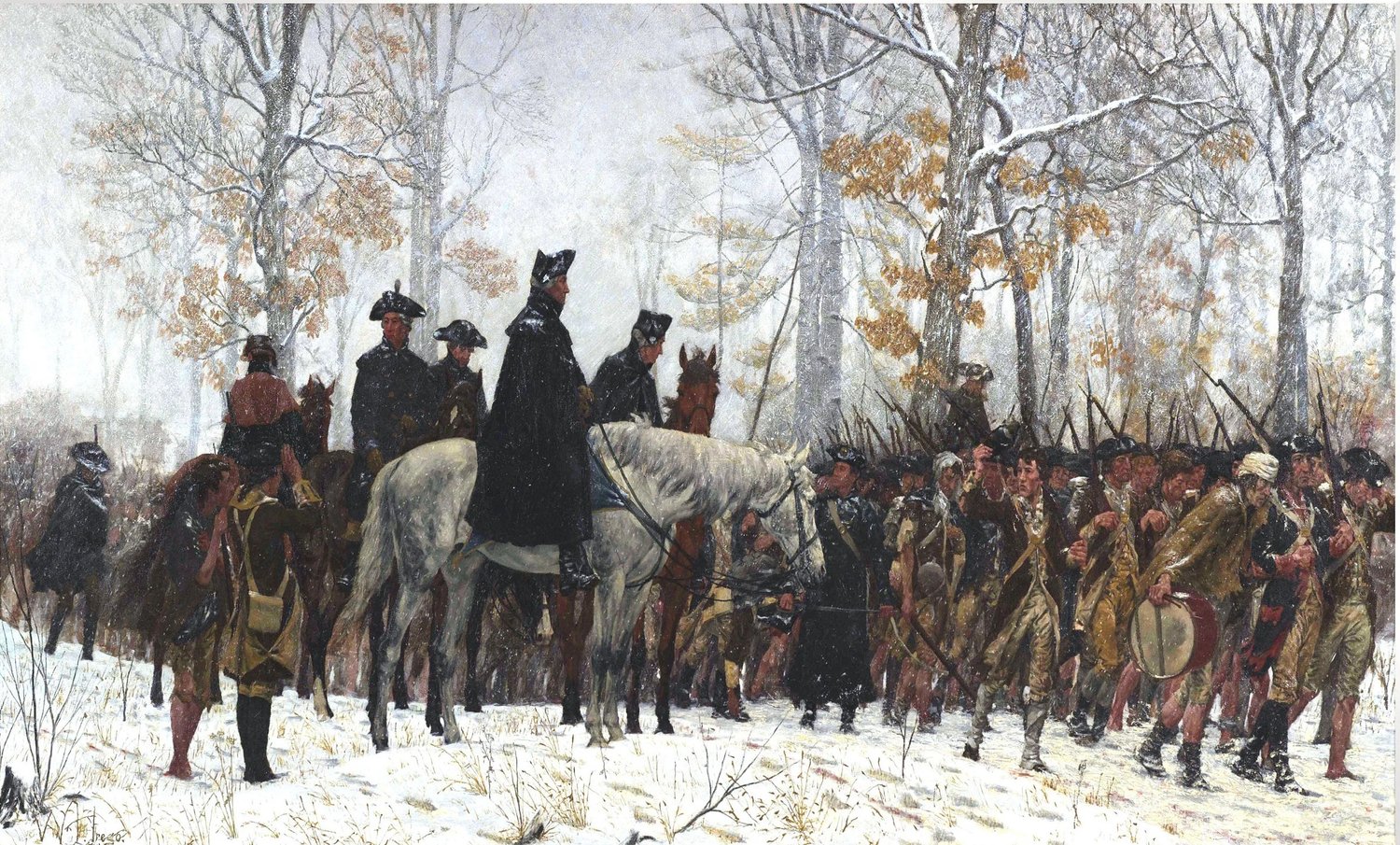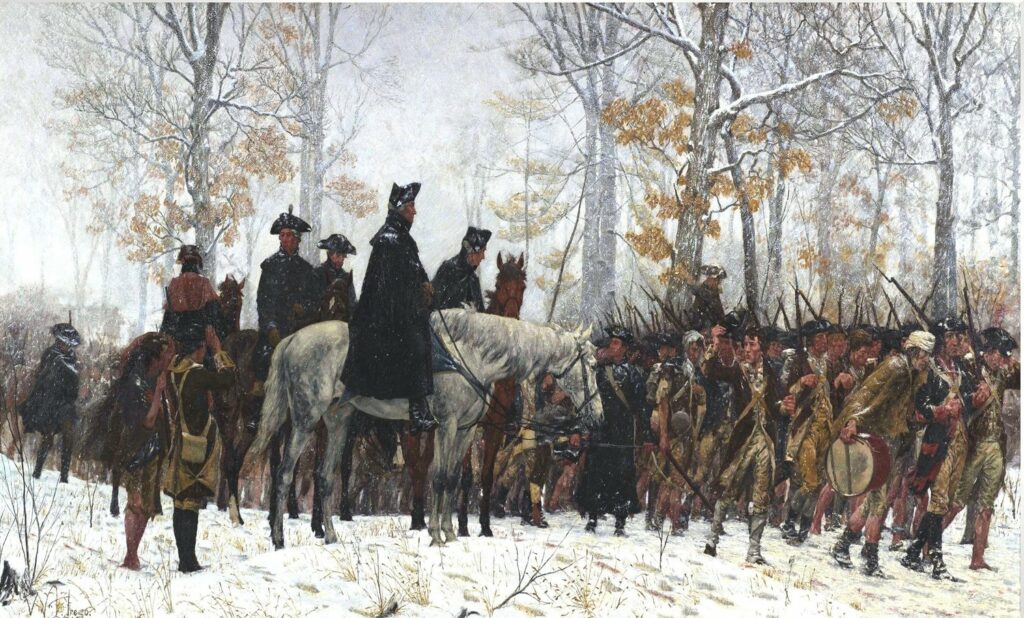
In December 1776, George Washington and his troops were encamped at McKonkey’s Ferry on the Delaware River opposite Trenton, New Jersey.
In August, they suffered major defeats at the hands of the British in New York City and by early December, nearly 11,000 men had deserted Washington’s rag-tag army.
Washington was desperate. The contracts for his men were up at the end of the month, at which point he would have lost them all. He didn’t have any peers per se, as he alone was in command of the Continental Army, and he rested on his shoulders to boost morale.
As luck would have it, Thomas Paine published a new work on December 19, called The American Crisis (Bookshop.org | Amazon). It included these rousing words:
“These are the times that try men’s souls; the summer soldier and the sunshine patriot will, in this crisis, shrink from the service of his country; but he that stands it now, deserves the love and thanks of man and woman. Tyranny, like hell, is not easily conquered; yet we have this consolation with us, that the harder the conflict, the more glorious the triumph.”
It did the work of rallying morale, and we all know what happened after Washington crossed the Delaware River on Christmas Night.
Even after Americans successfully defeated the British, established a government, and elected their first president, Paine felt it necessary to remind his fellow citizens that they ought to engage in critical thinking. In The Rights of Man (1791) he wrote:
“Reason obeys itself; and ignorance submits to whatever is dictated to it.”
Three years later in The Age of Reason (1794), Paine observed the damaging nature of widespread lies, in a prescient reflection of our own post-truth era:
“It is an affront to treat falsehood with complaisance.”
Words that ought to inspire people of any station.
At the pinnacle of an organization, there is only one CEO. While they have other members of the C-suite to turn to, those are direct reports rather than peers.
Unique roles are similarly isolating. In my time as an executive at Ford leading social media and digital communications, there was no one else within the company who spoke the same language, as it were.
I sought out mentors and colleagues outside of the company in similar situations — professional councils, loose networking, and executive coaching to help me process some of the situations in which I found myself.
In doing so, I found myself less uncertain (even when we were notching all kinds of firsts in the industry) and more confident in my abilities.
This is what led me to establishing an executive coaching practice in which I provide counsel and support for executives who need the advice and counsel of someone who’s been there, done that.









